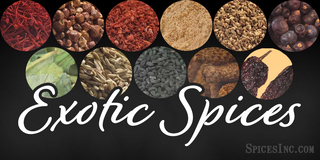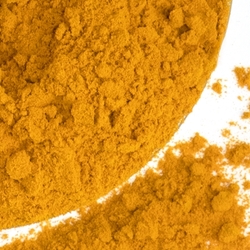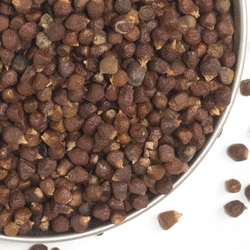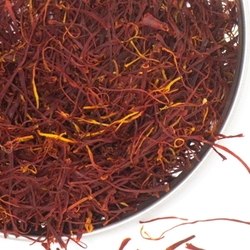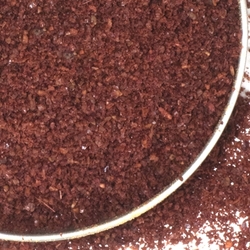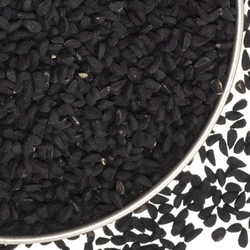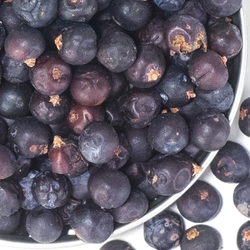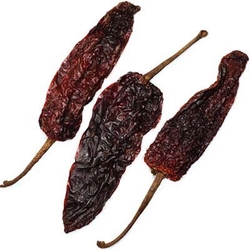Exotic Spices

For more than 4000 years, people have been trading spices from around the world. Spices like cinnamon and ginger, once vigorously sought after and fiercely guarded, are now commonplace in pantries around the world. All spices, at one point, were exotic and new to someone in the world.
In the last few decades, Americans have increasingly opened the door to global cuisines. This reflects both the desire to dig deeper into the food we’ve already embraced and continue to explore flavors that are not yet familiar to our palates. The current lineup of new and exciting spices to the American culinary landscape include things like the fruity-spicy heat of Korean chili flakes, the tart citrus flavor of sumac, and the umami richness of Japan’s shichimi togarashi.
Hundreds of years ago, sampling these flavors required an ocean voyage. Fast-forward to the modern era, and the advancements in technology and transportation have made spices that were considered exotic or rare much easier to come by. With the click of a mouse or a few taps on our phone we can have spices and herbs that would have required arduous feats of endurance to obtain delivered to our doorstep. You can see some of our favorites below, but we have the whole world of flavor to explore.
Saffron
Saffron is the most expensive spice in the world because it requires a lot of work to grow. It comes from the stigma of the blue flowering crocus, Crocus sativus, and it must be handpicked. Approximately 200-500 stigmas make up a single gram of saffron, and usually there are only three per flower. Once acre of farmland can produce about 3 pounds of saffron. A small amount, usually not more than a pinch, is called for in recipes to give food beautiful color and flavor. Saffron is used in paella, sauces, rice, seafood dishes, as well as many other foods from many cuisines all over the world.
Grains of Paradise
Grains of Paradise are peppery nuggets that are also called Melegueta pepper or Guinea grains. They are a product of the Melegueta tree, a plant hat is native to West Africa and is related to both ginger and cardamom. Grains of Paradise were commonly used as a pepper substitute when the price of pepper was exorbitant. They will give your cooking a hot, spicy, aromatic flavor with hints of citrus. Grains of Paradise are used often in Caribbean and African cooking.
Sumac
Sumac often suffers under the misconception that it is always poisonous. The spice that we carry, made from tart, red berries, is the product of the Rhus coriaria tree and is completely non-toxic. White sumac berries are the kind you should avoid. The Rhus coriaria tree is prolific and can be found growing in many different environments around the world. This spice imparts a sour lemony flavor and compliments fish or red meat. It is used widely in North African, Middle Eastern, and Southern Mediterranean cooking.
Amchur Powder
Amchur Powder is made from unripe mangos that have been sliced, sun dried, and finely ground. It is very tart, and is commonly used as souring agent in Indian cooking. It is frequently found in curries, chutneys, stews, soups, and in vegetable dishes.
Asafoetida
Asafoetida is an incredibly pungent spice that is used mostly in Indian vegetarian cooking. It is also known as hing in Hindi and that name can be regularly found in use in restaurants and recipes. It is often used to provide aromatic flavor when preparing food for people who can't eat onions or garlic, either for allergies or for religious purposes. This spice goes well with vegetables and adds a surprising amount of depth to vegetarian meals.
Black Cardamom
Black Cardamom, smoked and dried over an open fire, is like the cool neighbor you had when you were a kid; he wears a leather jacket, listens to his music a little too loud, but doesn’t mind if you borrow his records and is there for you when you need him. Rich and aromatic, black cardamom is smoke-forward with an underlying menthol quality that imparts a brisk freshness, and is hard to replicate.
Black Mustard Seed
Black Mustard Seeds are pungent little seeds. Botanically classified as Brassica nigra, Black Mustard an integral part of Indian and Pakistani cooking. Warming the seeds helps temper mustard’s inherent spiciness and allow the full range of flavors—from the nutty to the floral—to bloom. Though it is easy to grow, the black mustard seed (unlike its brown and white counterparts) must be harvested by hand. This preserves the integrity of the seed but also makes it significantly more difficult to come by.
Red Miso Powder
Red Miso Powder is a quick and easy way to punch up the umami goodness. Made from soybeans that are fermented for months, or even years, red miso is bold and salty and can steal your heart with the flick of a teaspoon. A little goes a long way because its flavor can be aggressive; red miso is best used on sturdier foods, like stews and braises, and on vegetables that can fight back.
Juniper Berries
Juniper Berries are thought to be the only spice that comes from the cone-bearing seed plants known as conifers, that grow in a cold climate. They grow on a small juniper shrub that is common throughout the Northern hemisphere and are the prime ingredient in gin. The seeds can take three years to mature and turn blue when they are ripe enough to be picked. Their aromatic flavor with its sweet accent is popular in European cuisines. In the United States the juniper berry is frequently found in marinades, brines, stuffing and sauces.
Korean Chili Flakes
Korean Chili Flakes, or gochugaru, are an integral part of Korean cooking. Though Korean food didn’t take on a spicy-hot flavor profile until the 1600s, it didn’t take long for gochugaru to become incorporated into the cuisine. These flakes can be found in the main dishes, and in the multiple side dishes, or banchan, that accompany every meal. Spicy, smoky, and slightly sweet, gochugaru add a bracing and unique bite and vibrant pop of red to any dish to which they’re added.
Nigella Seed
The Nigella Seed is often referred to as the fennel flower. It has a pungent and slightly bitter flavor with a hint of sweetness and a body that is small, black, sharply pointed. It is often confused with Black Sesame Seeds, Black Caraway Seeds, and Black Cumin Seeds. This seed is commonly used in Bengali cooking.
Fennel Pollen
Just a pinch of Fennel Pollen can make an average dish extraordinary! Fennel Pollen started gaining in popularity in the United States during the 1990's when it was introduced to Chef Mario Batali. Fennel Pollen is often described as "Culinary Fairy Dust", and refers to the way it imparts a full, rich, savory flavor to cooked foods. This is sometimes described as umami, that deeply intense and savory flavor of which chefs are often in pursuit.
Pasilla de Oaxaca Chile
Pasilla de Oaxaca chiles are not well known in the United States, but they are gaining some popularity as we expand our culinary borders. Most people in the US are more familiar with the smoked chipotle, also called smoked jalapenos. The Pasilla de Oaxaca possesses more heat than the chipotle and twice the smokiness. It comes from the mountainous, hard-to-reach Mexican state of Oaxaca, where they are grown and smoked and closely guarded. These chiles are popular in vegetarian dishes for their rich smokiness that delivers out a bacon-and-ham-like flavor without the addition of any meat. They are also used in the famous "mole negro", Latin style bean dishes, soups, sauces, and are stuffed with meat and cheese to make chiles rellenos.
Each one of these spices offers something unique to the cooking experience. They're a great way to expand your palate, and gain insight into the foods of the world. Swap some of these flavors into your regular recipes and you just may find that mealtime may become an adventure.

